A Summary on the 6th IAHR Webinar on Global Water Security
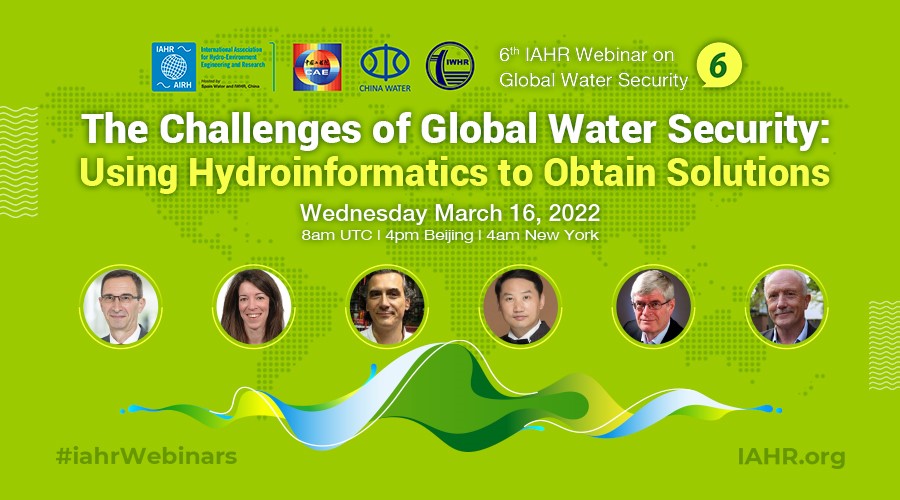
» Find out more details about this webinar
» Watch the playback recording of this webinar
» Watch the video clips of this webinar
» Find out more IAHR webinars
IAHR, through its Technical Committee on Global Water Security, organized the 6th webinar on March 16, 2022, this time on the Challenges of Global Water Security: Using Hydroinformatics to Obtain Solutions, focusing on framing high-level hydroinformatics solutions to the challenges and opportunities of Global Water Security, bringing together experts in their fields from the hydroinformatics science and engineering community within IAHR.
This was the first webinar in the Global Water Security series to be supported by the Chinese Academy of Engineering, with the webinar being led and chaired by Prof. Roger Falconer (IAHR past President) and Prof. Arthur Mynett (IAHR past Vice President), the co-chairs of IAHR Technical Committee on Global Water Security.
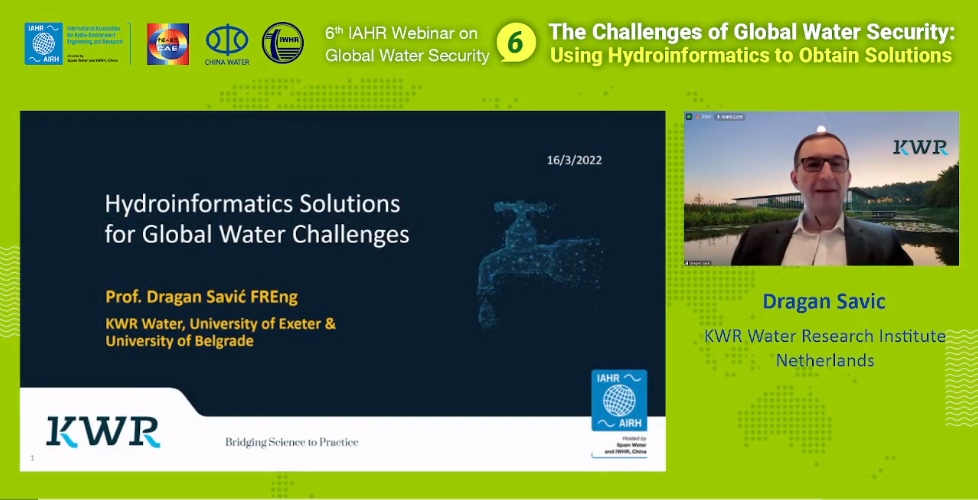
Prof. Dragan Savic, KWR Water Research institute, Netherlands, gave the first talk titled “Overview of the opportunities of solving global water security challenges through hydroinformatics.” He presented the following three perspectives, using applications in agricultural management and urban water management to illustrate his perspectives, which included: 1) hydroinformatics solutions are largely already available; 2) the water sector is already benefiting from hydroinformatics and digital transformations; and 3) the human-in-the-loop needs: highlighting that more automations means more training, not less. He also referred to digital twins, which give real time information based on the current sensing, and another key area for the future, namely robotics. He concluded that hydroinformatics is not the only technology; although it already has many applications in various areas and needs further research and advances.
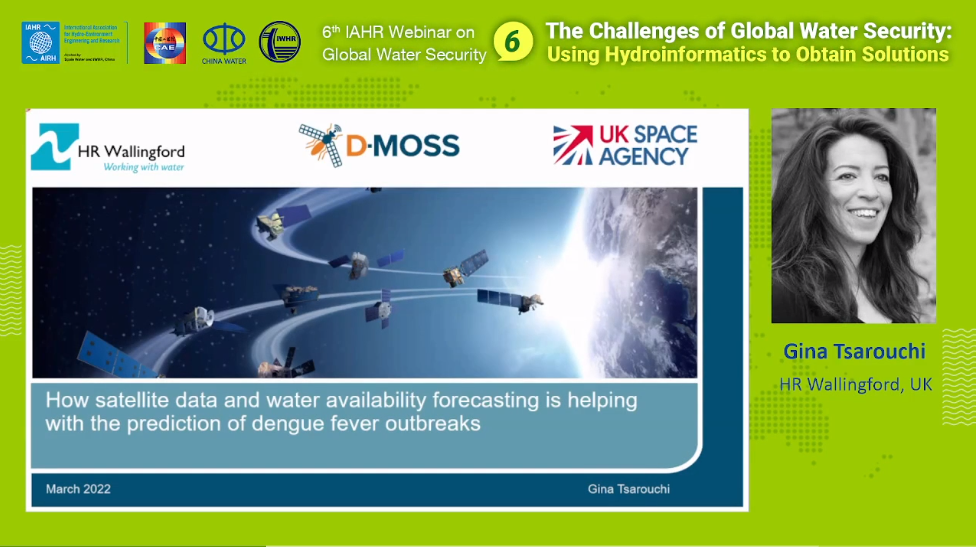
Dr Gina Tsatouchi, HR Wallingford, UK, gave a talk on "How satellite data and water availability forecasting is helping with the prediction of dengue fever outbreaks". After highlighting the importance of climate change and the availability of water in the spread of dengue fever, she pointed out that these factors are missing in past predictive models, and then introduced the statistical prediction model, which is based on: weather forecast data, water availability forecast data, and satellite data (including: rainfall, temperature, soil moisture etc.). A practical application of the model was then reported for a study in Vietnam, where the model was shown to give high predictive accuracy and provided positive reference for the government to take corresponding measures to reduce the risks of dengue fever. Gina emphasized that there were a number of challenges to the application of satellite technology and that we still lacked a full understanding of the opportunities that space technology could offer.
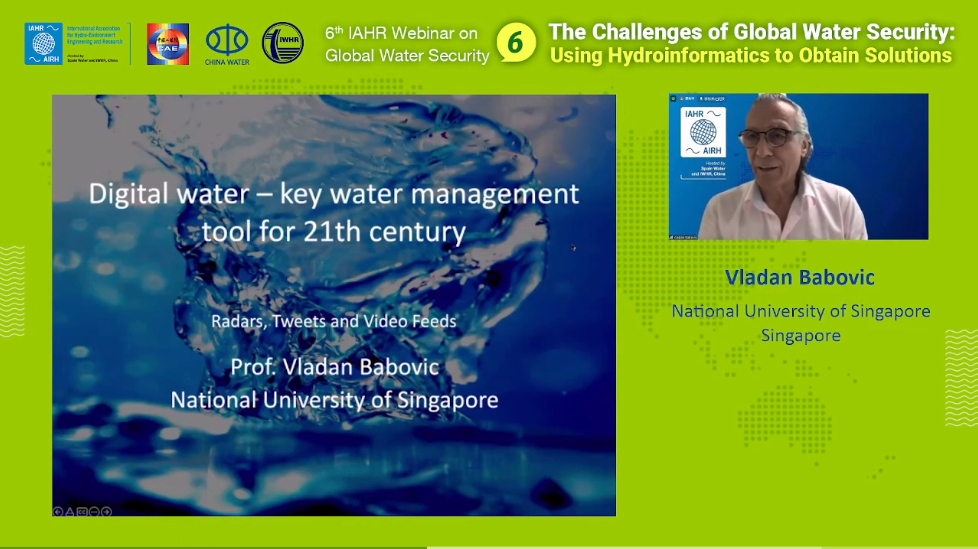
Prof. Vladan Babovic, National University Singapore, Singapore, gave a talk on “Key water management tools for the 21st century”. He introduced the first and second machine age, and took a deep learning model of rain as an example to introduce in detail the approach towards deep learning, using computer vision to identify rainfall intensities, subtracting the background, calculating the length of the rain streak etc. Also, he was encouraging about the development of AI, believing that the combination of humans and AI will perform better than working alone. So, if we bring the best AI tools to the water industry and water managers, we will be able to achieve a much higher degree of water security for all.

Prof. Qiuwen Chen, Nanjing Hydraulic Research Institute, China, gave a talk on “Deep learning and data assimilation in lake algal bloom forecasting”. He started by outlining the impact of human activities and climate change on lake algal blooms, and then introduced the details of models for forecasting harmful algal blooms and explained how to integrate data sets from different sources through the data assimilation methods. He also explained how deep learning and neural networks can provide improved effective prediction of the occurrence of lake algal blooms. He concluded by advising that there were many disadvantages in traditional process models for predicting algal blooms, and deep learning models provide an improvement in predictions through simulating the processes based on using multi-source data.
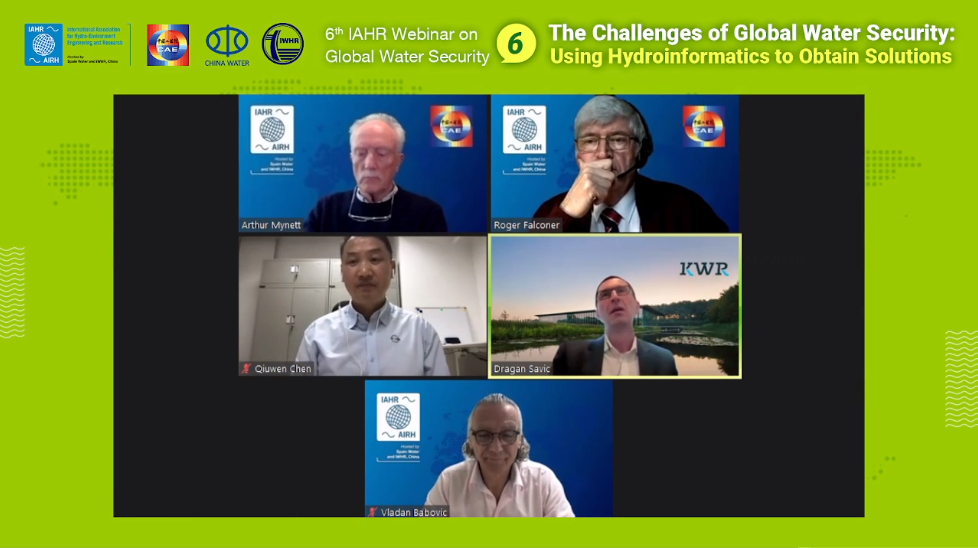
During the Q&A session, the speakers had a wide ranging discussion about the relationship between the availability of water, the specific hydro-meteorological conditions and disease transmission, autonomous robots and leakage identification, and the capacity of the public to understand the intricate details of current storm events. When it came to their views on the future, the speakers emphasized that although many specific technical issues were mentioned during this conference, technology is only one aspect, and concluded that "improved water security is based on technology, but not just technology and that humans will always have a key role to play in the future".